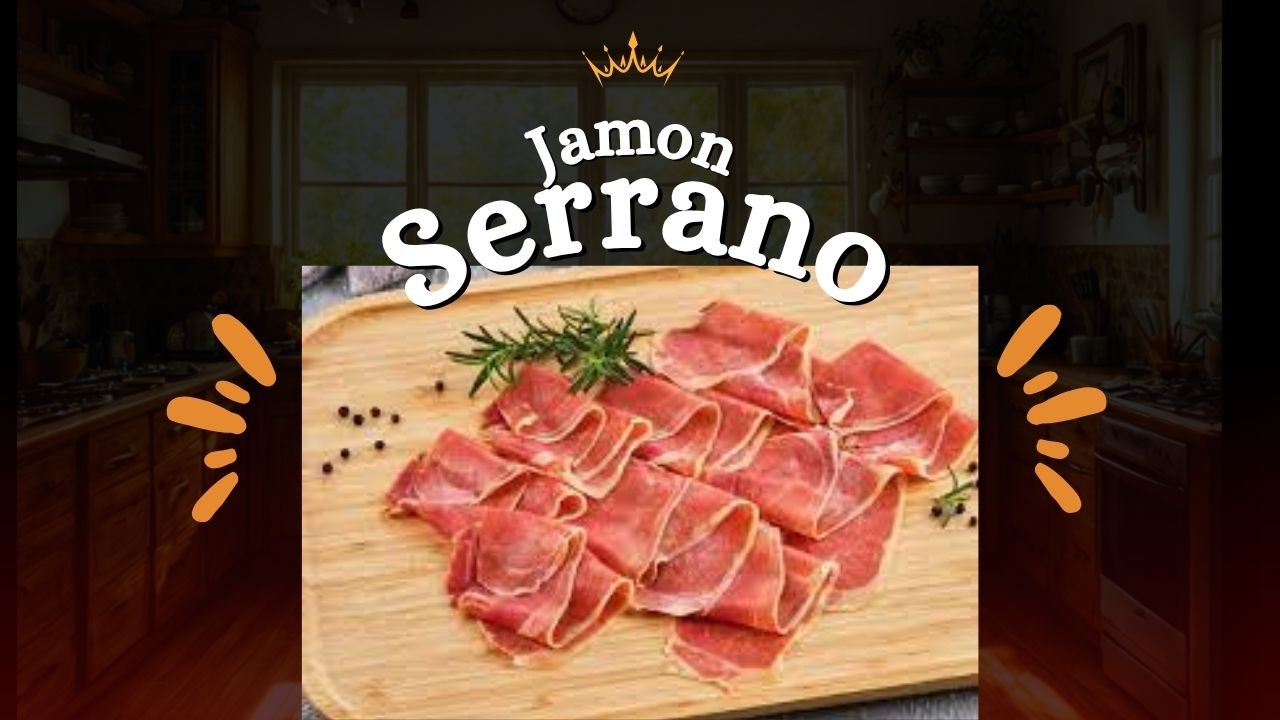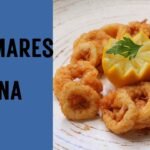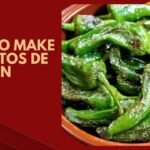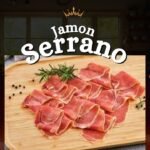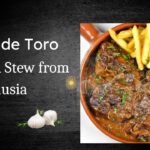Jamón Serrano is one of Spain’s most famous, beloved and widely consumed cured hams. This dry-cured ham has been enjoyed for centuries. It is known for its rich flavour, smooth texture, and mouth-watering aroma. Its smell is so satisfying that you are curious to have this. It is a perfect blend of tradition and Technology. In 2025, when it spreads worldwide, the process of making Jamón Serrano still respects the old traditions but through modern Technology. Spanish cuisine, and is more accessible as compared to the jamon Iberico.
We have to select pigs carefully, which is a slow curing process. Every step is done to create the perfect slice of ham, from carefully selected pigs to slow-curing methods. In this post, we’ll learn how is Jamón Serrano made today—combining history, origin and innovation.
Table of Contents
What is Jamón Serrano?
Jamón Serrano refers to a specific type of traditional dry-cured ham that originates from Spain and is made from white pigs. The word Jamon is a Spanish word for ham, and Serrano means from the mountains, a traditional method of curing the hams in the cool, dry air of mountainous regions. It has such a salty, rich flavour and a firm but tender and smooth texture. People in Spain serve this at many events and enjoy this as a tapa, in Sandwiches or as part of a charcuterie board.
The ham undergoes a dry-curing process. It involves salting and a long period of air-drying. This process can last for at least 12 months and can be up to 18 months. This long Period gives it a long texture, deeper colour and a strong flavour. A savory flavour and milder than Jamon Iberico. About 90% of ham is produced and consumed mostly in Spain. It is superfamous and of good quality.
Popularity outside of Spain
Some people ask where is jamon serrano from? It is popular in Spain, especially in Europe, with France, Germany and the UK being major importers. It is increasing in the United States and Mexico. It is a special item, it is present in Supermarkets, loved by locals and tourists alike.
Origin of Jamon Serrano:
jamon serrano origin long ago, people in Spain wanted a way to keep the meat fresh without using a refrigerator. So, they used salt to preserve it for a long time. This addition gives a rich flavour, which is firm but tender. A simple method but really tasty.
serrano ham origin over time, this became a tradition in many parts of Spain. Mostly, Families and farmers passed down their skills from generation to generation, and then it became an art. Jamón Serrano became more than just a food; it became a part of Spanish culture. Today, it is known and spread all over the world as a high-quality product.
Jamón Ibérico isn’t just food—it’s a symbol of Spanish heritage, crafted with patience, passion, and centuries of tradition in every slice
Pig Selection and Modern Farming (2025)
Today Farmers are selecting good quality breeds and carefully raising them.
1. The Right Breed Matters
Choosing the right breed is the first important step in making top-quality ham. Farmers use white breeds such as Duroc, Landrace, or Large White. Fat is just needed for flavour. These pigs grow well for some time and produce the kind of meat needed for perfect curing
2. A Healthy Diet for Better Flavor
Pis that can adapt well to various climatic conditions are preferred. It happens when there is a change in global climates. In 2025, farmers will feed pigs a balanced diet. These pigs are rich in grains, cereals, and natural feed. Many farms use special feed to improve the texture and taste of the meat, which is better for the health of pigs. Healthy pigs mean better ham.
3. Tracking and Technology
In 2025, Technology will help farmers track every pig from birth to production. Advanced sensors, artificial intelligence and data analysis, are used to check the individual pig’s health and behaviour. Pigs are raised in a clean and safe environment. With digital IDs and innovative farm systems, producers can trace the pig’s life, feed, and health record. They move freely there. This ensures full quality control and gives buyers more confidence in what they’re eating.
4. Sustainable Farming Practices
Farmers are working to reduce the impact of environmental issues. Stress-free animals grow healthier and produce better meat. They use eco-friendly feed, save water, recycle waste, and use renewable energy like solar panels. This helps protect the planet while making delicious Jamón Serrano. It is very essential for health.
Traditional Curing Process

Basic Ingredients:
- 1 whole fresh pork hind leg (preferably from the white pig breed)
- Sea salt (non-iodized)
- Cool, dry air
To enjoy this, patience is essential. Once fully cured, Jamón Serrano is thinly sliced and enjoyed as a tapa, in sandwiches, or simply on its own.
The Salting and Resting Process
It is the initial process in the production of Jamon Serrano. It contributes to the unique flavour and texture. Firstly, Trim the fresh pig’s ham, then use sea salt. The salting Period is carefully controlled and lasts for one day per kilogram of ahm weight. It ranges from 10 to 15 days, this depends on the weight. It takes place In the cold-storage rooms. Remove the excess moisture. After the salting Period, the hams are thoroughly brushed and washed. Use warm water to remove excess salt.
After washing, the hams are hung in a resting room. It has a special separate room which has cool temperature ranges around 2 to 6 degrees. This Period is crucial for the ham. By following this process It will be a drying longer and maturation phases, which will last for 6 to 18 months. Also, temperature and humidity are controlled to develop the ham’s full flavour, smell and texture. It is a long time-period but enhanced in flavour.
Perfect Pairings with Jamón Serrano

Cheese
- Manchego – It gives the saltiness of the ham and a nutty flavour.
- Idiazábal – Smoky and firm, another Spanish favourite.
- Goat cheese – It is dry and gives it a creamy contrast.
Bread
- Pan con tomate – Rustic bread with fresh tomato, garlic, olive oil, and sea salt.
- Toasted baguette slices – crunchy base for Jamón tapas.
- Crackers or flatbreads – Great for party platters and fun.
Wine
- Rioja (Red) – Smooth, fruity reds.
- Albariño (White) – Crisp and citrusy, ideal for lighter pairings.
- Cava (Sparkling) – Bubbles cut through the fat beautifully.
Fruits & Nuts
- Melon
- Figs or grapes
- Marcona almonds
Extras additions
- Olives
- Pickled vegetables
- Olive oil drizzle
Technology in 2025: What’s Changed?
It is deeply rooted in tradition, and Technology is transforming modern houses, moving from traditional methods to more innovative, efficient and controlled processes. The method of ham is still respected. In today’s Jamón Serrano production, tradition meets innovation. The basic steps like salting, resting and washing are still the same, but there is innovation. Intelligent climate control systems maintain the temperature for hams. The modern temperature has improved the quality and consistency. Automated hygiene systems are used to reduce the risk of contamination. It also helps the harmers in pigs’ breed, diet and curing time. These advances make the high- standards and the authentic taste of Jamon Serrano.
Final Thoughts
Jamon Serrano is counted in the Spanish’s heart. It needs patience and a natural process. A simple cut of pork into a complex, flavourful taste. It is a symbol of Spanish heritage and more than just a dish. Even when Technology evolves, It helps to maintain tradition. Innovative tools like climate control, hygiene automation, and QR tracking don’t replace the old ways—they enhance them. Technology is not replacing the human element but empowering it. It is a mix of development as a natural and advanced process.
Don’t hesitate to try this recipe, and go ahead! Share with the family, friends and loved ones.
